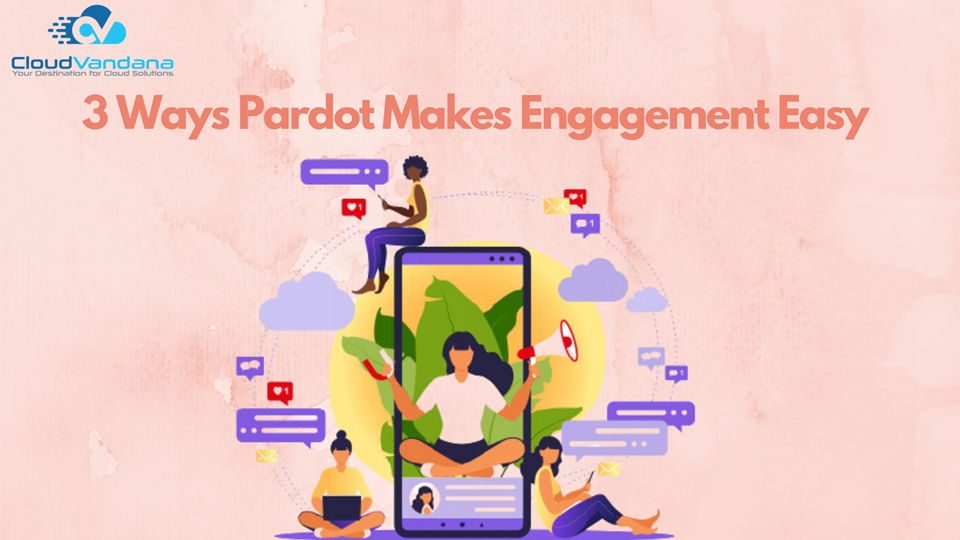As marketers, you should always look for ways to automate, optimize, and make things simple for yourself so you are able to run more programs, introduce more content, achieve the higher ROI, and the list goes on.
In this blog, I’ll cover three Pardot features that drive engagement.
1. Nurturing Your Customers with Personalized Messaging
Pardot email allows marketers to send simple and complex sets of emails with the engagement studio—for example building a sequence of emails that are triggered to customers automatically, based on their activities, behaviors, demographic data, or other criteria. You can use email for simple automation such as:
- Send special offers or discount emails to customers on their birthday or anniversary.
- Send abandoned cart emails to customers when they abandon their shopping cart without making a purchase.
- Send email to customers to collect their feedback for the products which they have purchased.
- Send emails to customers to introduce your new products or updates of products that they already purchased from you.
One of the most beautiful capabilities of Pardot is to help marketers to nurture the prospects, by providing the right content to the right time. It also helps you to every stage of prospect journeys to ultimately nudge them toward the next conversion—whether that’s a download or a sale.
Pardot creates a relationship between your products/services and your prospects. It will help give you a proper idea of whether the prospect is interested in your product or not.
Pardot engagement studio helps you to create a customer journey and find out the leads which are actually interested in your products/services.

2. Reporting: Measure Results and Adjust the Optimize Engagement
Building an audience engagement strategy may be a significant beginning. But if you do not measure the effectiveness, it’s less of a technique and more of a hypothesis.
The best engagement plans contain proven strategies. The initiatives need to be tested, measured, and validated as successful before full implementation. That’s only possible if you’re tracking the correct engagement metrics, evaluating the effectiveness of various campaigns, and narrowing your strategy right down to focus exclusively on people who work.
By diving into what’s working and what’s not, you can make decisions to increase customer engagement and focus on the channels, content, updates, promotions, and messages that create the highest engagement—and therefore highest ROI.
3. Website Visitor Tracking
In marketing, every customer engagement journey starts with your brand for the very first time on your website or another channel.
Pardot gives you the functionality to integrate your website by putting a simple piece of tracking code into your website so you can track all visitor activities on your website.
With the website tracking feature of a Pardot, often called web personalization, you can learn more about these anonymous visitors before they provide you with their information, enabling more personalized experiences.
Website visitor tracking allows you to gather valuable information—like location, company size, and industry—that makes anonymous visitors less anonymous (even if you don’t have their name, email, phone).

Later, it can allow marketers to deliver the targeting ad campaigns, and track how and where leads at the beginning of the funnel are most likely to engage. and especially provides useful information to build a customer journey map that can help to engage with these leads in the future to provide them the right information, at the right time, based on their activity.
These three features of a Pardot can help you take your engagement to the next level and get you ahead of your competitors.
If you need help setting up the Pardot, you can get in touch with us here.










